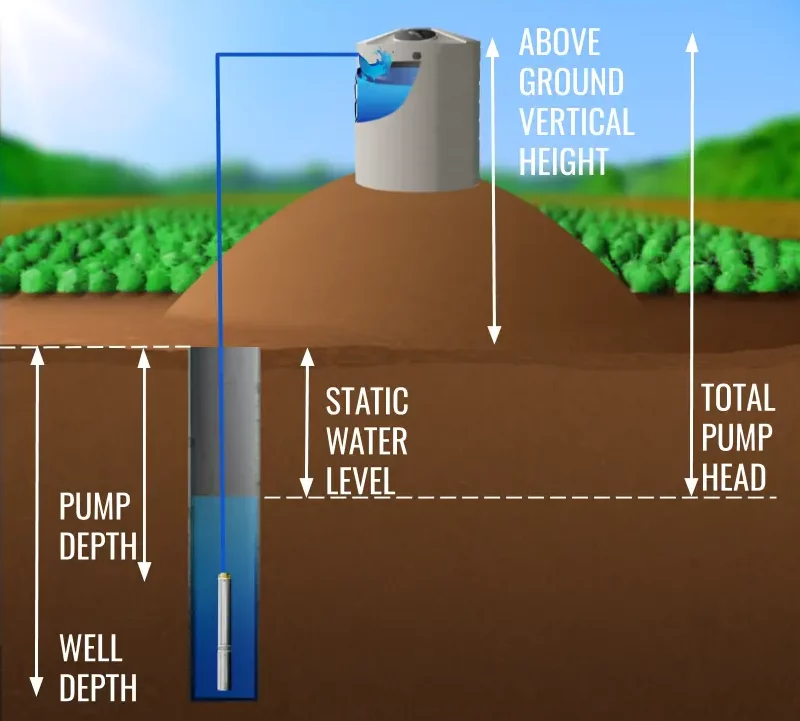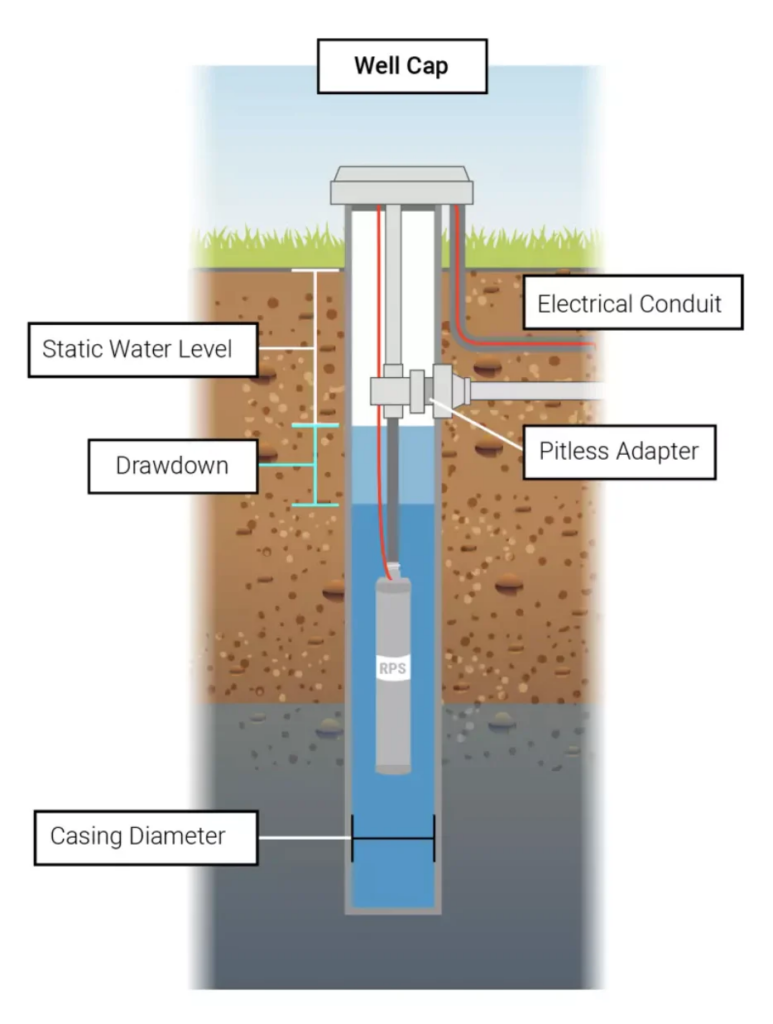Anatomy of a Well + Terms
In this section we will cover the basic anatomy of a water well and the most common terms used to describe their features.
Static Water Level
The depth from the surface of the well to the water level when pump is not pumping.
Drawdown
The distance the water level drops while pump is pumping. Drawdown begins when the pump is turned on and increases until the well reaches “steady state” sometime later.

Total Depth
The full depth of the well measured from the surface to the bottom of the well.
TDH (Total Dynamic Head)
The difference in elevation from the “steady state” water level of your well to the final destination of your water (well surface, a storage tank up a hill, etc)
Yield
How much water the well produces, measured in GPM (gallons per minute)
Casing Diameter
Inner Diameter of the Well Casing measured in Inches.

Pitless Adapter
In areas with sustained below freezing temperatures, water lines must be installed below the frost line to prevent freezing and bursting. A pitless adapter allows the pump casing to extend above ground level, while plumbing the water through the side of the casing, allowing the pipe to stay below the frost line.
Well Cap Vs Well Seal
The diagrams illustrate the difference between a Well Cap and Well Seal. Well Caps are useful when trenching both electrical and plumbing. The electrical wiring comes through the top of the well and through a conduit built into the Well Cap and then redirected underground to your power source. A pitless adapter allows the plumbing to stay under the frost line.
Well Seals allow both the electrical wiring and plumbing to run straight out the top of the well. This is more convenient in areas that don’t have sustained freezing temperatures.


